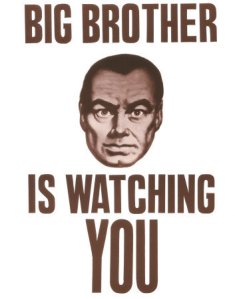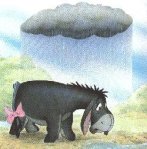GoAnimate.com: Analyze better by Addo Gaudium
http://goanimate.com/go/movie/0H0WercuU98M?uid=0oXp7AvmNzdU&utm%5Fsource=gigyaembed
Like it? Create your own at GoAnimate.com. It’s free and fun!
Filed under: Media Asset Creation | Leave a comment »
GoAnimate.com: Analyze better by Addo Gaudium
http://goanimate.com/go/movie/0H0WercuU98M?uid=0oXp7AvmNzdU&utm%5Fsource=gigyaembed
Like it? Create your own at GoAnimate.com. It’s free and fun!
Filed under: Media Asset Creation | Leave a comment »

Vettriano, J. (1992). The Singing Butler II. Retreived from: http://www.jackvettriano.com
My teacher tried to bring that out as often as possible. Passalacqua was a passionate artist. His son is an artist as well. He draws the first way.
I point this out because the younger puts his deceased father’s work on his website as if it is his since they share the same name. But anyone who studied with his father, knows the difference right away. His father worked with passion and emotion and it is strong in his work. It’s what makes the difference between a good artist and a great artist.
Sometimes, actually many times, I struggle to draw or paint with a stifled worldly control, to look like the other guy. My natural way isn’t like that. I would draw in this false controlled way and say to Passalacqua, look, this is hard for me.. he would respond sarcastically, “congratulations”.
He once asked me, “does it have to be painful?” I have often needed coaxing to let what is around me go, but it always delivers a much smarter painting with greater ease, when I do.
Monday, July 27, 2009
1 Comment
addogaudium
I love this: “Congratulations”. What a great summary. Also this question “does it have to be painful?” Why did he ask you that? Your stories about Passalacqua are facinating to me. It seems that he was truly a master teacher. The 2nd way is, of course, the best way, and I am facinated by those who find a way to live there perpetually. I for one am certainly not like that, but think that I could become that if the stars aligned just right. Sometimes I wonder what it will take to thrust me into that other realm.
Sunday, August 2, 2009 – 01:35 PM
Filed under: Week 4 | Leave a comment »

Hands of the world. (n.d.) smray. Source: media.photobucket.com
The Zanders’ obviously yearn for a world in which we can all live with the “WE” mindset, and it is a goal I believe is worth trying to achieve. That being said, I marvel at the way we try to achieve it. I’ve alluded to this in previous post, but I’ll say it again: We will never have world peace if we aren’t at peace with the person sleeping next to us at night. We can’t achieve world peace if we can’t put aside our differences with our mother or father, brother or sister, neighbor or co-worker. Peace has to start on a local scale. Like really local, like inside of yourself. I know (and am related to) people that aren’t even at peace with themselves. How can we expect to accomplish peace on such a grand scale with division in our own families, neighborhoods, and communities? It reminds me of a motto about winning that our wrestling team had when I was a freshman: “If it is to be, it is up to me.” Substitute the word “WE” for “me” and you’ll be close to what the Zanders are getting at.
Source:
Zander, R. & Zander, B. (2002). The art of possibility: Transforming professional and personal life. New York: Penguin Books.
Filed under: Books, Week 4 | Tagged: Zander | 1 Comment »

Optimism. (n.d.) Source: aviary.com
In general I am an optimistic person. Still, sometimes those self-imposed barriers stand proud and strong. This book is helping me improve slowly by forcing me to confront issues I perhaps wasn’t even aware that I had.
Anywho . . .back to practice #11. As I read though the chapter, my mind kept wanting to apply the principle to my choirs. We can let many things distract from the ultimate business of making beautiful music. ”
“I don’t want to sit by her.”
“I don’t like this music.”
“My head hurts.”
“My boyfriend dumped me”
“My voice is changing.”
“My parents are splitting up.”
“My friend died.”
True. But why are we here? We’re here to make beautiful music. We’re here to let music make a difference in our lives and in the lives of the audience. If we truly believe that our task is a worthwhile one, we can’t let anything stand in the way of it. As long as you have a voice, there is NOTHING that can stop you from accomplishing that!
Source:
Zander, R. & Zander, B. (2002). The art of possibility: Transforming professional and personal life. New York: Penguin Books.
Filed under: Books, Week 4 | Tagged: optimism, Zander | 2 Comments »

Chess. (n.d.) Source: miroslodki.files.wordpress.com
Filed under: Media Asset Creation | 1 Comment »
My parody of E-40 and Keak the Sneak’s song “Tell Me When To Go”
No video, just a static picture.
The lyrics can be found here
On a serious note, knowing more specifics about convergent culture and copyright law will help me as the collaboration is a goal of mine for my final project, and the law part will help me stay legal. The book “The Art of Possibility” probably had the greatest impact on me that will not only help me going into the media project and finishing the thesis, but with my teaching as well.
Sources
Blog gang sign. (n.d.) http://blog.theavclub.tv
Jenkins, H. (2006). Convergence culture: Where old and new media collide. New York: New York University Press
Zander, R. & Zander, B. (2002). The art of possibility: Transforming professional and personal life. New York: Penguin Books.
Filed under: Media Asset Creation, Week 4 | Tagged: blogosphere, censorship, convergence culture, copyright, creative commons, E-40, Girl Talk, Harry Potter, Keak the Sneak, MPAA, parody, RIAA | 9 Comments »

close-up of a man sitting on a couch holding a shoebox (n.d.) Clara Griffin. Source: fotosearch.com
Teachers need to have this skill of enrolling as much as anyone, if not more, because we have what our students need. If my students are less than thrilled to sing the music I pick out for them, its because I haven’t enrolled them. Enrolling them is (theoretically) easy to do because I am passionate about what I teach, which is something not everyone can say, unfortunately. If they aren’t on board, it is my fault not theirs. Let the enrolling begin!
Source
Zander, R. & Zander, B. (2002). The art of possibility: Transforming professional and personal life. New York: Penguin Books.
Filed under: Books, Week 4 | Tagged: enroll, sales, shoes, Zander | 1 Comment »

Dallmeier J. and Dallmeier M. Big brother is watching you. (2003). Source: http://www.dallmeierart.com
Week 3: The Value of Stickam?
Working through the Stickam tutorials prior to tonight’s practice session, I was skeptical of this web-based, live video feed application. I kept thinking to myself, “Why go to so much trouble?” I mean, we all (EMDT students) have iChat and Skype, both of which have powerful video and teleconferencing capabilities… Not to mention there’s Wimba, which accommodates audio, video, chat and a presentation platform…
What’s so great about Stickam, especially since you have to use Skype to troubleshoot its audio deficiencies?
But… when my entire group got logged in and all our faces were visible via the feed, I couldn’t help but smile. I immediately knew the value of Stickam: TOGETHERNESS!
Yes, we’ve all heard each other’s voices via Wimba and seen each other’s images through various projects, but it is quite a different experience to see everyone live, in real time. I couldn’t stop smiling. My classmates are real people! Throughout the EMDT program I have battled feelings of isolation and, even though I have developed deep and meaningful relationships with many of my classmates, when the computer gets turned off at the end of the night, so do our connections. Tonight’s Stickam’s session, in some small way, helped bridge the gap between our worlds.
So when I turn off my computer tonight, I’ll still be thinking of… Chris with his sore back, Abram tucking lil Evelyn into bed, Julia surfing the web at a bar, Libby looking very studious in her reading glasses, Nick as chill as ever and Joe packing up his boxes getting ready to move… It feels nice to get to know you all on another level.
Image Credit: Screen shot taken by Emily Wray of live Stickam session on 7/23/09
POSTED BY EL WRAY AT 7/23/2009 09:08:00 PM
LABELS: EMDT, ICHAT, ISOLATION, SKYPE, STICKAM WIMBA
1 COMMENTS:
addogaudium said…
I am with you on this one. Even with the delay in the video feed, it just felt a little more communal when we could all see each other. I was thinking that this could be a pretty cool thing to use with my students, but then I remembered than none of them are 14 : (
At any rate, perhaps I can use this with some of the parents when coordinating things like costuming or after school activities. And think, someday you’ll be able to do all of this from your phone (even if it isn’t a Nokia).
Filed under: Week 3 | 3 Comments »

Oh Dear. (n.d.) Source: http://www.clevelandfrowns.com
Speaking of copyright, one of my favorite copyright cases is the battle over Winnie the pooh, in which the guy who owned the merchandising rights to the bear quietly waited for Disney to turn Winnie into a billion-dollar-a-year cashbox, then sued Disney for a couple billion dollars. I love it. Incidentally, I am wondering if a tatoo of Winnie the pooh is copyright infringement . . .
Seriously. I want to know.

winnie napkin (n.d.) Source: http://www.izzys-party-shop.com
The best example of a work in this category is “Happy Birthday to You.” Nobody spent a ton of money to promote this song and make it into an international hit. We did it for free. Yet the song generates 2 million dollars a year for Time-Warner. It is actually copyright infringement to perform this song publicly. This I have trouble understanding, as the “exclusive right to public performances” makes sense when the composer is actually ALIVE and able to perform. Seeing as how the writer of the words (the melody is now in public domain) is dead, how can a public performance be infringement? Logically, it can’t be, yet legally it is. This is a work that I have no problem with becoming public domain, and yet another illustration of our in-need-of-repair copyright system.
Filed under: Week 3 | Tagged: copyright, Disney, fair use, public domain, Winnie the Pooh | 5 Comments »

source: http://www.cfnews13.com
What is the goal of his school?
(To get students into the entertainment business)
What does Ron Smith want to see his students do while they are going to college? (work in the entertainment industry)
Why type of media do students tend to like the best
(animation)
What is a struggle for Ron Smith as he works with creative students?
(getting them to do the hard work necessary to unleash their creative potential)
Which of the following does Ron Smith NOT specifically mention he will do/use to engage students. (movies, sound, websites, dance around the room, give out candy)
When new technology comes out, does Ron Smith use it right away or does he wait to see if it will last?
(use it right away)
Why are teachers the problem when it comes to bridging the gap between media the students choose to express themselves and media the teachers prefer
(the teachers think that they have arrived if they can make power-points.)
What does “crossing the Rubicon mean?”
(to pass the point of no return)

Julius. (n.d.) Michael Komarck. Source: http://www.leidenuniv.nl
List three “hot applications/technologies” that students are getting into even outside of school.
(1. Scratch)
(2. Sketch-Up)
(3. Blender)
Does Ron Smith favor a behaviorist or constructionist approach to learning?
(constructionist)
Filed under: Week 3 | Leave a comment »